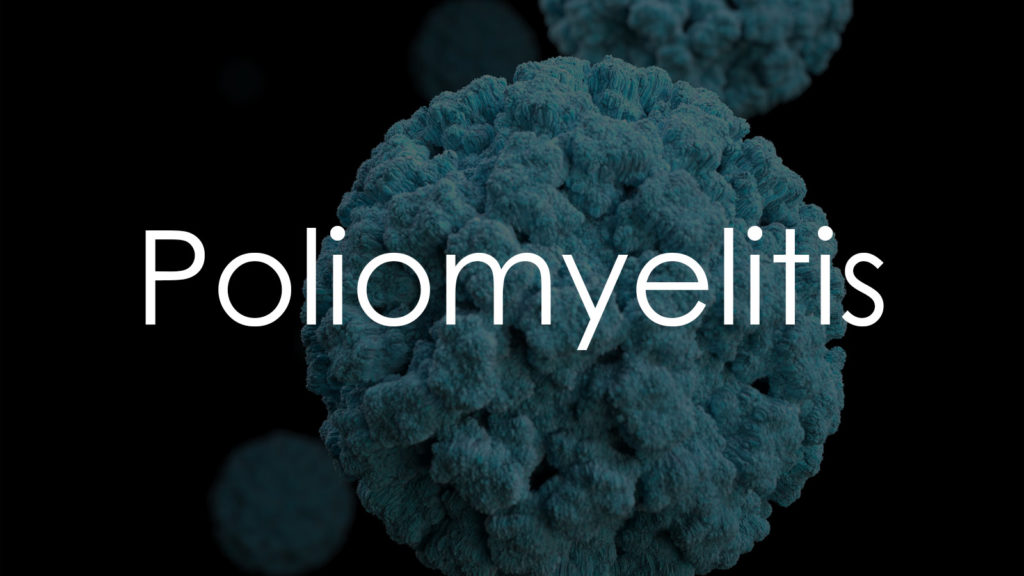Symptoms of poliomyelitis, commonly known as polio, can range from mild to severe, and the severity depends on the type of poliovirus infection. Recognizing these symptoms is crucial for timely diagnosis and treatment to prevent complications and control the spread of the virus.

Asymptomatic Poliovirus Infection
No Visible Symptoms
Silent Infection
In most cases, approximately 72% to 95% of poliovirus infections are asymptomatic, meaning the infected individuals do not exhibit any visible symptoms. These silent infections still allow the virus to be transmitted to others.
Virus Shedding
Even without symptoms, asymptomatic carriers can shed the virus in their feces, contributing to the spread of poliovirus in the community.
Mild Symptoms (Abortive Poliomyelitis)
Flu-like Symptoms
Fever
A mild fever is often one of the initial symptoms of abortive poliomyelitis. The fever usually ranges from 100°F to 101.5°F (37.8°C to 38.6°C).
Fatigue
Individuals with mild polio may experience fatigue and general malaise, feeling tired and unwell without specific cause.
Gastrointestinal Symptoms
Nausea and Vomiting
Nausea and vomiting are common symptoms of abortive poliomyelitis, causing discomfort and dehydration in some cases.
Diarrhea
Diarrhea can also occur, leading to further dehydration and nutritional deficiencies if not managed properly.
Respiratory Symptoms
Sore Throat
A sore throat is another early symptom of mild polio, often mistaken for a common cold or flu.
Runny Nose
A runny nose may accompany the sore throat, adding to the general discomfort and flu-like presentation.
Non-Paralytic Poliomyelitis
Aseptic Meningitis
Headache
Severe headache is a hallmark symptom of aseptic meningitis caused by non-paralytic poliomyelitis. The headache can be intense and persistent.
Stiff Neck
Neck stiffness, particularly when attempting to touch the chin to the chest, is a common symptom and a key indicator of meningitis.
Musculoskeletal Symptoms
Muscle Pain and Stiffness
Muscle pain and stiffness, particularly in the neck, back, arms, and legs, are common in non-paralytic polio. These symptoms can be severe and debilitating.
Back Pain
Intense back pain may occur, adding to the overall discomfort and reducing mobility.
Systemic Symptoms
High Fever
A high fever, often exceeding 102°F (39°C), is common in non-paralytic polio and can persist for several days.
Nausea and Vomiting
Nausea and vomiting may continue or worsen in non-paralytic polio, requiring careful management to prevent dehydration.
Paralytic Poliomyelitis
Initial Symptoms
Flu-like Symptoms
The initial symptoms of paralytic poliomyelitis are similar to those of non-paralytic polio, including fever, fatigue, headache, and muscle pain.
Sudden Onset of Paralysis
After the initial symptoms, individuals may experience a sudden onset of paralysis, typically within a week of the initial symptoms. This paralysis can progress rapidly.
Spinal Poliomyelitis
Limb Weakness
Spinal poliomyelitis primarily affects the spinal cord, leading to asymmetrical limb weakness. One side of the body is usually more affected than the other.
Muscle Atrophy
Over time, the affected muscles may atrophy, becoming smaller and weaker due to lack of use and nerve damage.
Bulbar Poliomyelitis
Cranial Nerve Involvement
Bulbar poliomyelitis affects the brainstem, impacting the cranial nerves. This can lead to difficulty in speaking, swallowing, and breathing.
Respiratory Distress
Severe cases can lead to respiratory distress, requiring mechanical ventilation to assist with breathing.
Bulbospinal Poliomyelitis
Combined Symptoms
Bulbospinal poliomyelitis is a combination of both spinal and bulbar polio symptoms, leading to limb weakness, cranial nerve involvement, and respiratory issues.
Severe Outcomes
This type of polio can lead to severe disability and requires intensive medical care and long-term rehabilitation.
Post-Polio Syndrome (PPS)
Late-Onset Symptoms
Muscle Weakness
Individuals who recovered from polio may experience muscle weakness decades later, even in muscles that were not initially affected by the virus.
Fatigue
Chronic fatigue is common in PPS, significantly impacting daily activities and quality of life.
Joint Pain
Arthralgia
Joint pain, or arthralgia, can develop as a late complication of polio, affecting both previously affected and unaffected joints.
Progressive Weakness
Muscle and joint pain often accompany progressive muscle weakness, necessitating medical intervention and physical therapy.
Respiratory Issues
Breathing Difficulties
Individuals with PPS may develop breathing difficulties, particularly if they had bulbar involvement or respiratory muscle weakness during the initial infection.
Sleep Apnea
Sleep apnea and other sleep-related breathing disorders are also more common in individuals with PPS, requiring specialized care and treatment.
Conclusion
Recognizing the symptoms of poliomyelitis is crucial for early diagnosis and effective treatment. Symptoms can range from mild flu-like symptoms and gastrointestinal issues to severe paralysis and long-term complications like Post-Polio Syndrome. By understanding these symptoms, individuals can seek appropriate medical care, reducing the risk of severe outcomes and preventing the spread of the virus. Early vaccination remains the most effective measure for preventing polio and its associated complications.